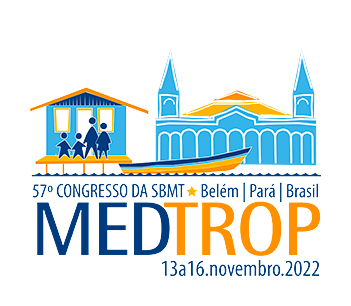Dados do Trabalho
Título
Persistence of Schistosoma mansoni in an urban area of Salvador and its implications for control
Introdução
Areas with known focal transmission of S. mansoni in large cities are becoming endemic areas due to poor housing and sanitation conditions and fecal contamination in surface waters with the presence of the snail Biomphalaria sp.
Objetivo(s)
The aim of this study was to evaluate the persistence of S. mansoni in an urban area of Salvador and its implications for control.
Material e Métodos
The study area was the Pirajá neighborhood, where the São Bartolomeu Park ecological reserve and the Cobre River basin are located. Cross-sectional studies were carried out in the years 2019 and 2021, and a cohort was identified to carry out a longitudinal study. All participants answered sociodemographic and behavioral questionnaires and provided up to three stool samples on different days for parasitological examination by Kato-Katz. During the survey, residents were educated about schistosomiasis, educational folders were distributed and positive cases for S. mansoni and other geo helminthiasis were treated. After 30 days, treatment efficacy was tested, and subjects who failed therapy were treated again.
Resultados e Conclusão
Between these two years, there was no significant change in local infrastructure. Most participants were female (59.0%), with a mean age of approximately 34 ± 21 years in both evaluated years. Participants in 2021 traveled more often to other cities than in 2019 (35.8% vs 19.8%), however, contact with natural waters on the trip (18.0% vs 26.7%) and within the neighborhood (23.8% vs 45.2%) was lower than in a previous year. Prevalence practically halved (5.5% vs 2.6%), but there was a slight increase in the mean parasite load (35 epg vs 90 epg). The incidence was 2.0%, and these new cases occurred mainly between males in different age groups (< 60 years). None of the incident cases of S. mansoni infection traveled in the previous year. In conclusion, recurrent intervention with educational activities and treatment and the apparent lack of interest in activities related to water contact seemed to reduce S. mansoni prevalence. However, new infections occurred within 2 years, which indicates continued local transmission, like a traditional endemic area. Infrastructure interventions will be necessary to eliminate water contamination and permanently prevent schistosomiasis transmission.
Palavras-chave
Urban schistosomiasis, Schistosoma mansoni, basic sanitation
Área
Eixo 07 | Helmintíases
Categoria
(Concorra com apenas um trabalho) Concorrer ao Prêmio Jovem Pesquisador - Mestrado
Autores
Camila Freitas Chaves, Fernanda Cedraz, Pedro Muccillo, João Ricardo Filho, Lee Andrade, João Victor Romão, Lúcio Macedo Barbosa, Mitermayer Galvão Reis, Ronald Edward Blanton, Luciano Kalabric Silva
